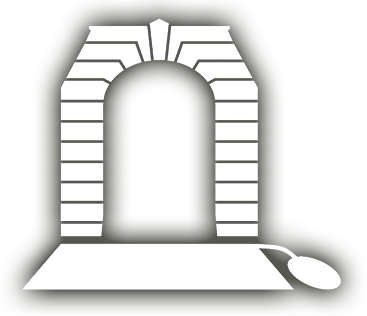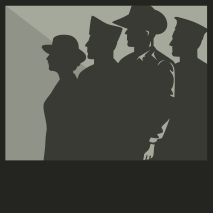
BENSON, Charles William Reginald
| Service Number: | 3347 |
|---|---|
| Enlisted: | 2 November 1915, Holsworthy, New South Wales |
| Last Rank: | Private |
| Last Unit: | 3rd Infantry Battalion |
| Born: | Oaks Hotel, Neutral Bay, New South Wales, Australia , 13 September 1888 |
| Home Town: | Strathfield, Strathfield, New South Wales |
| Schooling: | Fort Street Public School and Scots College, New South Wales, Australia |
| Occupation: | Foreman (Embosteel Pty Ltd) |
| Died: | GSW Heart, Bapaume, France, 2 March 1917, aged 28 years |
| Cemetery: |
Warlencourt British Cemetery Plot IV, Row F, Grave 24 |
| Memorials: | Australian War Memorial Roll of Honour, Strathfield St Anne's Anglican Church BENSON Memorial Plaque |
World War 1 Service
| 2 Nov 1915: | Enlisted AIF WW1, Private, 3347, 18th Infantry Battalion, Holsworthy, New South Wales | |
|---|---|---|
| 20 Dec 1915: | Involvement AIF WW1, Private, 3347, 18th Infantry Battalion, Enlistment/Embarkation WW1, --- :embarkation_roll: roll_number: '12' embarkation_place: Sydney embarkation_ship: HMAT Suevic embarkation_ship_number: A29 public_note: '' | |
| 20 Dec 1915: | Embarked AIF WW1, Private, 3347, 18th Infantry Battalion, HMAT Suevic, Sydney | |
| 14 Feb 1916: | Transferred AIF WW1, Private, 3rd Infantry Battalion, Transferred in Egypt to 3rd Battalion | |
| 22 Mar 1916: | Embarked AIF WW1, Private, 3347, 3rd Infantry Battalion, HMAT Grampian, Alexandria | |
| 23 Jul 1916: | Wounded Private, 3347, 3rd Infantry Battalion, Battle for Pozières , GSW (shoulder) | |
| 1 Jan 1917: | Involvement AIF WW1, Private, 3347, 3rd Infantry Battalion, Rejoined unit from wounded 1 Jan 1917. Occupied trenches in the Flers area until German retirement commenced at the end of February. The events of the malee that occurred on 2 March are recorded in the Official History in Volume 4 pages 107-109. Reg was in a forward post when the Germans raided their lines. Reg left his post to chase some fleeing Germans and was shot through the heart. He died instantly and was buried where he fell. After the war his body was relocated to Warlencourt British Cemetery. | |
| 2 Mar 1917: | Involvement AIF WW1, Private, 3347, 3rd Infantry Battalion, The Outpost Villages - German Withdrawal to Hindenburg Line |
Help us honour Charles William Reginald Benson's service by contributing information, stories, and images so that they can be preserved for future generations.
Add my storyBiography contributed by Peter Benson
3347 LANCE COPORAL REGINALD BENSON
3RD BATTALION K.I.A. 2nd MARCH 1917 AGE 28
AND IS BURIED AT WARLENCOURT NEW BRITISH CEMETERY NEAR BAPAUME.
Epitaph: I thank my God for
Every remembrance of thee
Reg was born in “The Oaks Hotel” in Neutral Bay, Sydney in September 1888 at which time his grandfather owed the hotel. He was the eldest of three sons for Charles and Dorathea Benson. In later years, the family moved to the Strathfield area where Dora dabbled in real estate. They owned several houses in Strathfield before settling into “Kelvin”, in Woodward Ave. As children the three sons went to Fort Street Public School in Sydney.
When war broke out in 1914, Reg was working as a “works manager” at Embosteel, a steel embossing company in Sydney. On the 2nd of November 1915 he enlisted and was placed with the 7th reinforcements of the 18th Battalion. Before he left Australian shores on the 29th of December 1915, Reg married his long time girl friend Hettie Locke. They were married on the 21st December, at St Andrew’s Cathedral Sydney, only one week before Reg sailed out of Sydney harbour aboard HMAT “Suevic” never to see his wife again.
“Suevic” arrived in Egypt on the 14th of February 1916 in time to meet the Australian troops that had just come back from Gallipoli. The newly arrived troops from Australia were divided amongst the “old hands” from Gallipoli. By doing this a further two Divisions were formed having 50% of the men with battle experience. In the reshuffle, Reg was placed with the 3rd Battalion. The Battalion trained in the deserts of Egypt for another month before departing from Port Alexandria aboard troop ship “Grampian” on the 22nd of March. Five days later they arrived in the port of Marseilles, France. From here the battalion made its way through the country side of France by train to a quiet sector known as the nursery. They entered the frontline for the first time in France just outside the town of Fromelle and stayed in this sector until the 10th of July 1916 when they entrained for the Somme Valley. On the 19th of July, the battalion marched through Albert on its way to the frontline at Pozieres. On the night of 22/23 July 1916 the 1st Australian Division, did, what the English Divisions had tried to do on three separate occasions. They capture the village of Pozieres. Reg was in this attack and was wounded, with a gun shot wound to the right shoulder.
After six months in hospital in England, Reg returned to his battalion on the 1st of January 1917. At the end of February, the Germans started their systematic withdrawal to the Hindenburg Line. As the Germans withdrew, the allied lines moved forward to meet them. Trench warfare in this area had been temporarily suspended as the lines constantly moved and changed. In order to keep the allies in check so that they were not overrun, the Germans would occasionally carry out offensive actions. In the early hours of the morning on 2nd of March 1917, they carried out just such an action.
The 1st Australian Brigade was in the front line 2 kilometres south of Bapaume. The Brigade front had been established during the night of 1 and 2 March on a line near TRIP TRENCH. There were no existing trenches or posts so a new line of posts were dug with a view to improving and connecting them later. At 5:35am on the morning of March 2nd, the enemy put down an intense barrage behind this line of posts. About 6:45am the barrage died away and an enemy raid took place under the cover of a thick fog, consisting of four parties. One party of approximately 80 strong, moved undetected, south towards the Australian line along the Bapaume-Albert Road. At this point the party appears to have split into two separate parties. One of these parties has passed between two of the frontline posts and reached a company HQ of the 4th Battalion. The sentry on duty at the entrance to the dugout gave the alarm and was shot immediately after. A melee took place with the raiders bombing the dugout killing Lieutenant Leslie Mervyn Lane of the 4th Battalion, wounding 2 other Officers and 5 other ranks. By this time the alarm had been raised and the raiders were counter attacked by a party of the 4th Battalion, by the remaining men in the dugout and by the left post of the 3rd Battalion. Very few, if any, of the raiders escaped. Four of the Australian prisoners were unfortunately killed during the scuffle.
The remaining portion of the raiders that had divided off attacked a 3rd Battalion post on the Bapaume Road, but were driven off by Lewis Gun fire. Two Germans were killed and the rest disappeared in the fog. It is about this point that Reg, acting on his own initiative, made a bold dash from his post in order to chase two Germans seen running down a side road. As he was running after these two Germans, he was shot through the heart and killed instantly. He had only made 20 yards from the outpost when killed. He was buried where he fell in the field.
Several weeks later when his younger brother, Captain Spencer Benson of the 54th Battalion was traveling through the same area, he came across Reg’s grave. One can only imagine the pain and despair Spencer would have felt seeing his older brothers grave in that lonely French field.
After the war all the graves that were sprinkled across the battlefields were gathered in and placed into proper war cemeteries. Reg’s remains were exhumed and he now lays in Warlencourt British War Cemetery along with three mates from the 3rd Battalion and those of the 4th Battalion who had been killed on the same day and a further 460 other Australians who were killed in the vicinity of Warlencourt during the war. The epitaph on his headstone is a verse from the Bible and was selected by his wife, who was never to remarry.















